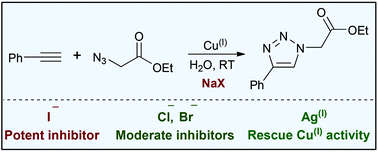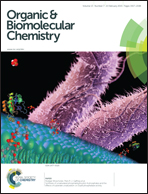Halide inhibition of the copper-catalysed azide–alkyne cycloaddition†
Abstract
Chloride, bromide and iodide are inhibitors of the copper-catalysed azide–alkyne cycloaddition, with iodide exhibiting the most detrimental effects on rates and yields. A study of this inhibition is presented, along with experimental protocols to accommodate the presence of halides in this widely used reaction.


 Please wait while we load your content...
Please wait while we load your content...